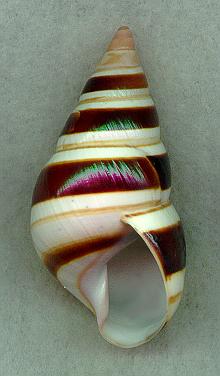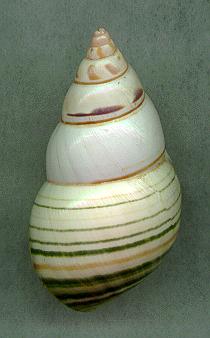

Drawer 2


 |
 |
The Liguus Cabinet Drawer 2 |
 |
 |
 |
 |
 |
 |
|
ID#L0030 Price US $60 |
 |
 |
 |
 |
ID#L0031 Price US $50
|
ID#L0032 Price US $75
|
 |
Liguus fasciatus castaneozonatus
Pilsbry, 1912
Collected on Key Largo, FL.
These are shells from a colony on Key Largo that exhibit,
as a consistent pattern, narrow color bands of 2 to 3 mm width.
This narrow banding is also consistent on all of the roseatus
(yellow banded shell) found sympatrically within the same colony.
ID#L0033 Price US $125 SOLD as a SET
 |
Liguus fasciatus castaneozonatus
variety walkeri
Clench, 1933
Collected in Hammock No. 9, Pinecrest, FL.
The variety walkeri is found in hammock No. 9 of the Pinecrest area
of the Everglades. It is unique to this hammock even though
the "walkeri" pattern (decadent banding of the last whorls) is found in
other colonies of castaneozonatus. Both of the illustrated shells were
collected in hammock No. 9, as can be seen not all of the walkeri show a
decadence of band color in the geriontic stages of growth.
(right) L= 55 mm, W= 30.1 mm / (left) L= 55.7 mm, W= 31.5 mm
ID#L0034 Price US $125
Sold as a Set
 |
 |
 |
 |
|
Liguus fasciatus castaneozonatus
|
 |
 |
 |
  |
|
Liguus fasciatus castaneozonatus
|
 |
 |
 |
 |
Liguus fasciatus castaneozonatus
|
|
 |
 |
 |
 |
|
Liguus fasciatus castaneozonatus
|
|
|
Liguus fasciatus elliottensis
|
|